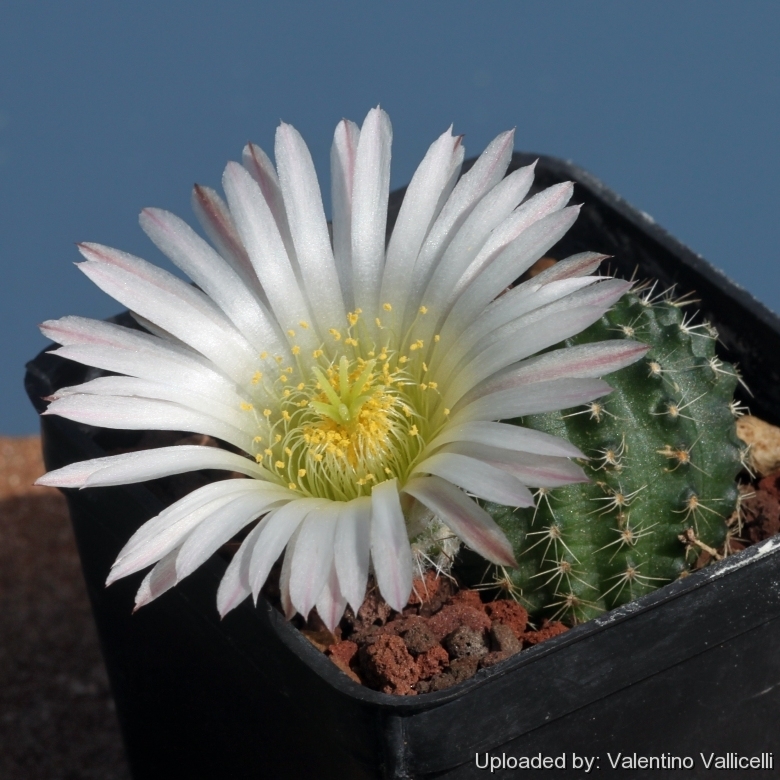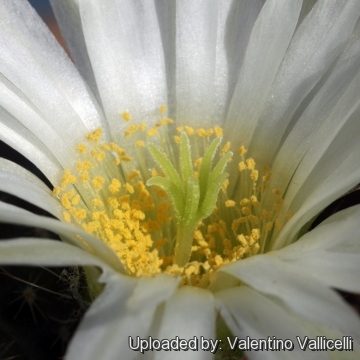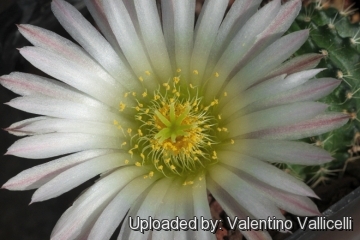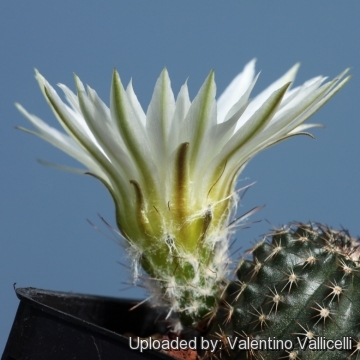Donate now to support the LLIFLE projects.
Your support is critical to our success.
Your support is critical to our success.

Echinocereus pulchellus subs. sharpii Photo by: Valentino Vallicelli
Synonyms:
- Echinocereus pulchellus subs. sharpii (N.P.Taylor) N.P.Taylor
- Echinocereus pulchellus var. sharpii N.P.Taylor
See all synonyms of Echinocereus pulchellus
back
Accepted name in llifle Database:Echinocereus pulchellus subs. sharpii (N.P.Taylor) N.P.Taylor
Cactaceae Consensus Init. 3: 9. 1997
Synonymy: 2
- Echinocereus pulchellus subs. sharpii (N.P.Taylor) N.P.Taylor
- Echinocereus pulchellus var. sharpii N.P.Taylor
Echinocereus pulchellus (Mart.) C.F.Först. ex F.Seitz
Nova Acta Phys.-Med. Acad. Caes. Leop.-Carol. Nat. Cur. 16(1): 342, t. 23, f. 2. 1832
Synonymy: 17
- Echinocereus pulchellus (Mart.) C.F.Först. ex F.Seitz
- Cereus pulchellus Pfeiff.
- Echinocactus pulchellus Mart.
- Echinonyctanthus pulchellus Lem.
- Echinopsis pulchella Zucc. ex Förster
- Echinocereus aguirrei Glass
- Echinocereus pulchellus var. amoenus (A.Dietr.) H.P.Kelsey & Dayton
- Cereus amoenus (A.Dietr.) Hemsl.
- Echinocereus amoenus (A.Dietr.) K.Schum.
- Echinocereus pulchellus subs. amoenus (A.Dietr.) W.Blum
- Echinopsis amoena A.Dietr.
- Echinopsis pulchella var. amoena (A.Dietr.) Förster
- Echinopsis pulchella var. flore kermesina Haage ex Förster
- Echinopsis pulchella var. rosea Labour.
- Echinocereus pulchellus subs. venustus W.Blum & W.Rischer
Echinocereus pulchellus subs. acanthosetus (S.Arias & U.Guzmán) N.P.Taylor
Cactaceae Consensus Init. 5: 12. 1998 [see also: W.Blum in W. Blum et al., Echinocereus (preprint) [8] (1998)]
Synonymy: 2
- Echinocereus pulchellus subs. acanthosetus (S.Arias & U.Guzmán) N.P.Taylor
- Echinocereus pulchellus var. acanthosetus S.Arias & U.Guzmán
Echinocereus pulchellus f. cristatus
Accepted name in llifle Database:
Echinocereus pulchellus subs. weinbergii (Weing.) N.P.Taylor
Cactaceae Consensus Init. 3: 9. 1997
Synonymy: 3
- Echinocereus pulchellus subs. weinbergii (Weing.) N.P.Taylor
- Echinocereus pulchellus var. weinbergii (Weing.) N.P.Taylor
- Echinocereus weinbergii Weing.
back

Echinocereus pulchellus subs. sharpii Photo by: Valentino Vallicelli

Echinocereus pulchellus subs. sharpii Photo by: Valentino Vallicelli

Echinocereus pulchellus subs. sharpii Photo by: Valentino Vallicelli

Echinocereus pulchellus subs. sharpii Photo by: Valentino Vallicelli
| Your Actions | |
|---|---|
| Back to Echinocereus index | |
| Back to Cactaceae index | |
 |
Back to Cacti Encyclopedia index |








